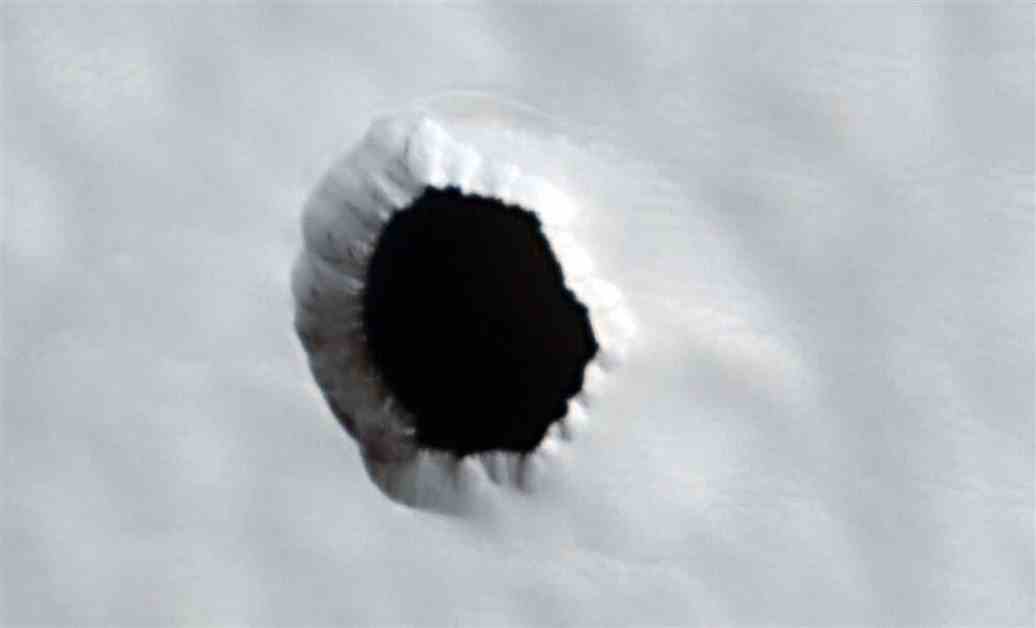Mars: Mysterious Hole Discovery Sparks Excitement and Speculation
A recent finding by NASA’s Mars Reconnaissance Orbiter has captured the attention of scientists worldwide: an unexplained hole on the surface of Mars. Situated in the Arsia Mons region, this mysterious feature has prompted a wave of curiosity about its origins and potential significance.
Theories and Speculations
One of the leading theories surrounding the hole is that it could be a skylight leading into an underground lava tube. Similar formations are found on Earth in volcanic regions like Hawaii, where the collapse of a lava tube’s roof creates an opening. If this is the case on Mars, these lava tubes could serve as natural shelters for future astronauts, shielding them from harsh surface conditions.
Alternatively, the hole could be a pit formed by volcanic or tectonic processes, a common occurrence on Earth. The exact nature of the Mars hole remains uncertain, but geological analysis suggests that it could offer valuable insights into the planet’s history and subsurface conditions.
Significance for Future Exploration
Understanding the nature of this mysterious hole is crucial for the future of human exploration on Mars. If it does lead to a lava tube, it could serve as an ideal location for establishing a habitat, reducing the need for heavily shielded surface structures. Robotic exploration missions will be essential for gathering more information about the formation’s structure, stability, and potential for supporting human life.
Comparative Analysis with Earth
Studying Earth’s volcanic regions provides valuable insights into Martian geology, with pit craters and lava tubes serving as analogs for potential formations on Mars. Given Mars’ lower gravity, lava tubes on the Red Planet could be much larger and more stable than those on Earth, offering expansive environments for human habitation and settlement.
In conclusion, the discovery of the mysterious hole on Mars opens up a world of possibilities for future exploration and colonization efforts, shedding light on the planet’s geological history and potential for supporting human life. Further research and robotic missions will be essential in unlocking the secrets of this enigmatic feature.



